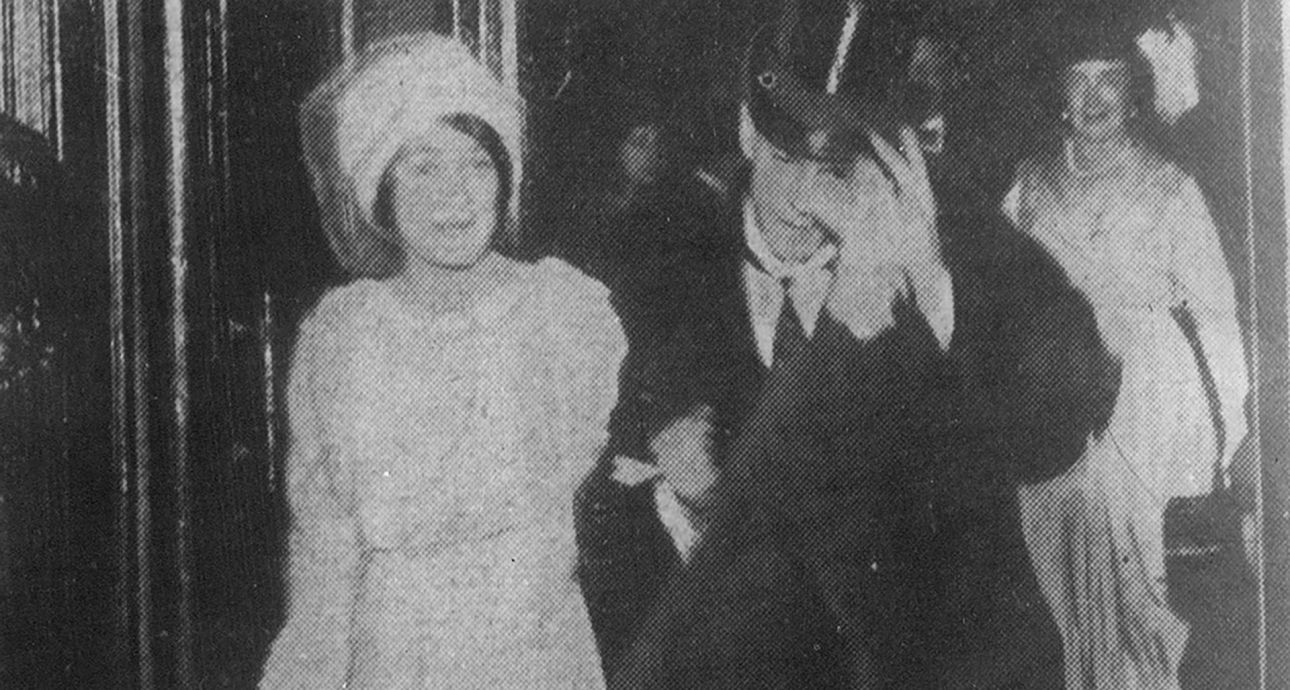
Nijinsky: Urgent Wedding in Buenos Aires
On September 20, 1913, a popular Argentinian magazine Caras y Caretas published two photographs in its society section titled “The Wedding of the Dancer Nijinsky”. In the first photograph, the bride and the groom are waiting for their marriage to be registered in the #13 marriage registration office of Buenos Aires. In the second one, the couple is going out of the Church of St. Michael after the church wedding.
The wedding took place in the midst of the first Latin American tour of Ballets Russes, and came as a complete surprise not only for the company, but also for the newlyweds themselves.
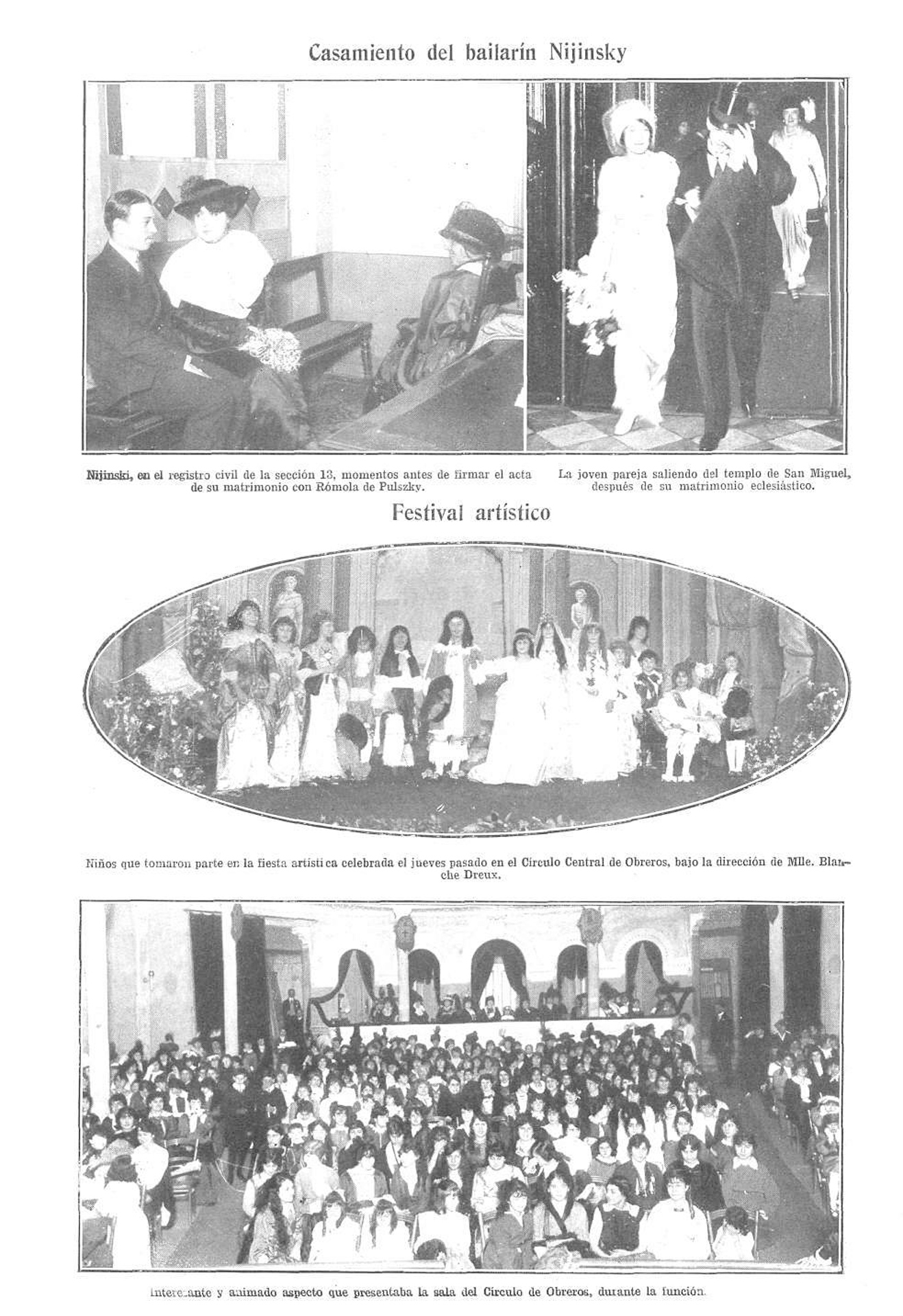
Wedding photographs of the Nijinskys in the society section of Caras y Caretas magazine for September 20, 1913. Photo: Biblioteca Nacional de España
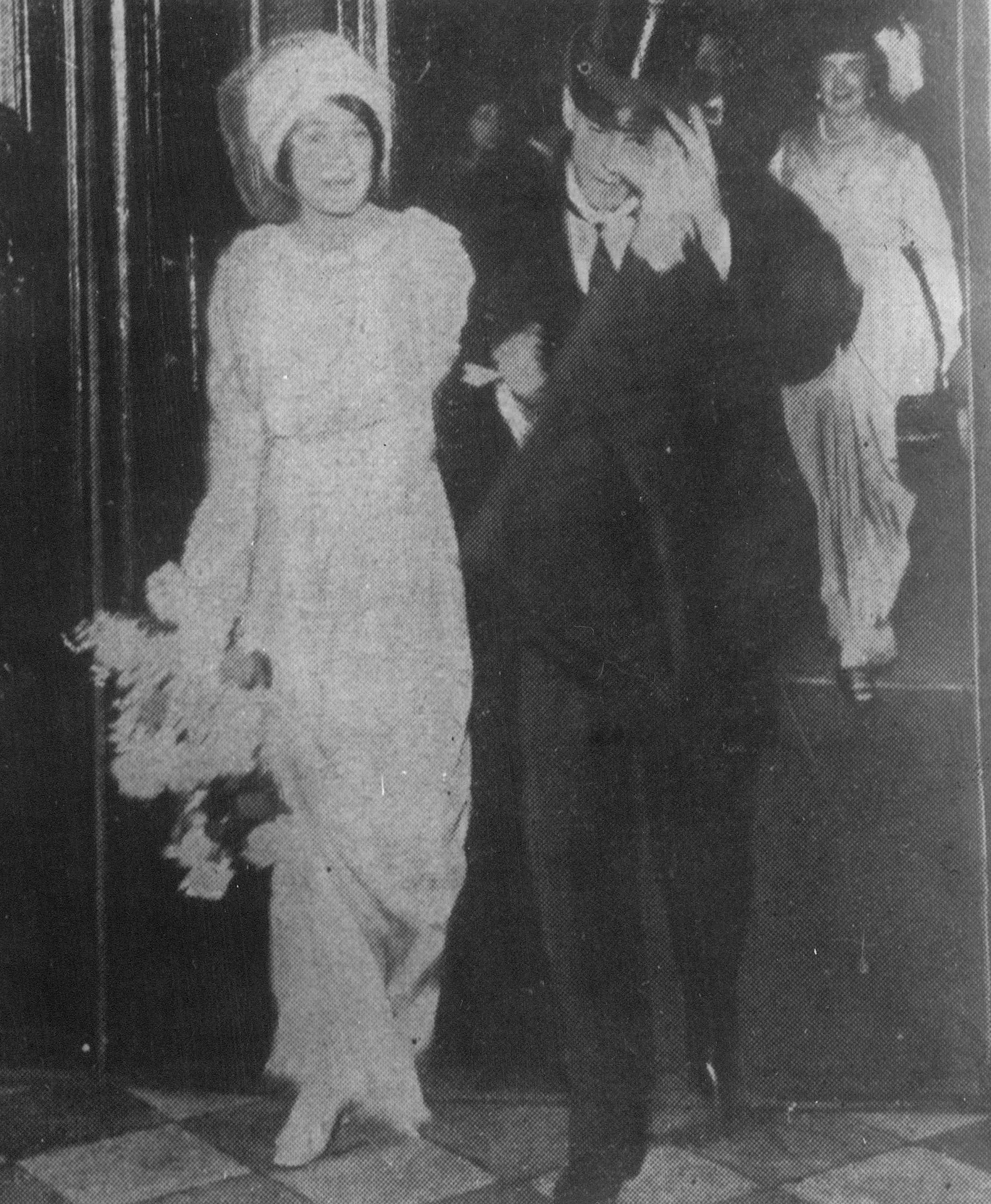
The Nijinskys after the church wedding in the Church of St. Michael in Buenos Aires on September 10, 1913. Photo: Archivo General De La Nación Argentina
By the early 20th century, money was not a problem for the Argentinian aristocracy who got rich selling meat and grain. Those people knew that they could bring anyone from Europe for themselves: the best architects, sculptors, engineers, and artists. People from Latin American offered fees that were impossible to say no to. The head of the Ballets Russes Sergei Diaghilev was not an exception. He signed a contract and let the biggest star of the company — his 24-year-old lover Vatslav Nijinsky — go on a tour to Argentina and Brazil. The impresario himself could not cross the Atlantic — he was awfully afraid of this large body of water since he was a child.
By that time, Diaghilev and Nijinsky had been together for five years. The jealous head of the Ballets Russes controlled the life of a young artist completely, including his communication with his family and all financial matters. The only place where Vatslav was free was the stage. Diaghilev could not have fathomed that a beginner 22-year-old Hungarian ballerina Romola Pulszky who would be hired last-moment only because many female dancers refused to cross the ocean, would be a threat to him. However, Pulszky was in love with Nijinsky and dreamt of stealing him away from Diaghilev.
The voyage between France and South America took three weeks. The dancer who was enjoying his sudden and long forgotten freedom rehearsed on the deck in the morning, and after then spent his time reading, touring the cities where the ship docked, and when he met the Hungarian colleague he did as much as bow and smiled politely. Pulszky spoke neither Polish, nor Russian, and Vatslav’s French was too poor to keep up a conversation. Romola almost accepted defeat, when suddenly several days before the arrival to Argentina Nijinsky proposed to her with the help of pantomime.
It is not clear what this sudden change was about. According to Romola, Vatslav later explained to her that he fell in love with her when they were preparing for the Latin American tour, but he didn’t show it.
They bought rings on the way in Rio de Janeiro. On the night of September 6, the artists checked into one of the most expensive and fashionable hotels in Buenos Aires — Majestic: Nijinsky into his suite, and Pulszky — into a cheaper room two floors above. Diaghilev’s patron, Baron Dimitri de Gunzburg, took it upon himself to organize the wedding. After figuring out the paperwork he sent the bride and groom for confession. The priest couldn’t properly talk to Nijinsky because of the language barrier, but he made Pulszky promise that she would do everything possible to prevent her husband-to-be from dancing in the “amoral ballet Scheherazade.”
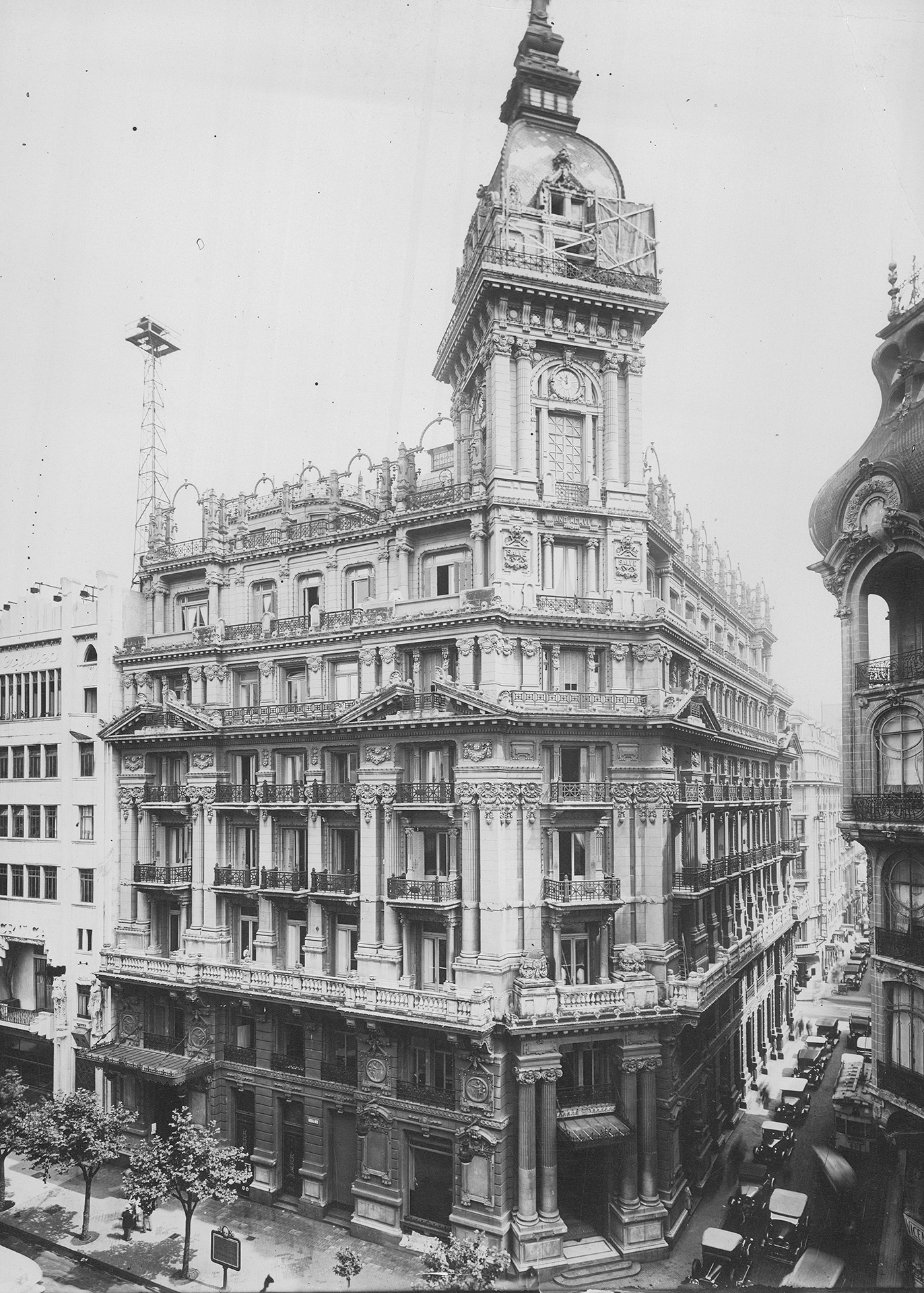
Hotel Majestic where the artists of Ballets Russes stayed in 1913.
The marriage between Vatslav and Romola was registered on September 10. During the celebration breakfast it turned out that at night Pulszky was going to wed in a light blue dress. Prima ballerina Tamara Karsavina convinced everybody that it was a very bad sign, and the bride was urgently dragged all over women’s clothing shops and tailors of Buenos Aires. The fitting cream-colored dress, shoes, and veil were found, but shopping took too long, and Romola came late to the ancient St. Michael’s Church on Bartolome Mitre Street.
Nijinsky looked very serious. The ceremony was conducted in Latin and Spanish. The bride looked at the gold-plated wings of the angels depicted on the altar and was very worried that she wouldn’t know when to say ‘yes.’ Luckily, at the crucial moment the priest switched to French. After the wedding, the newlyweds and guests went to the dress rehearsal at Colon Theater.
The Nijinskys had a silent dinner for two in Romola’s room. Vatslav finished his food, smiled, kissed his wife’s hand and left. She moved into his five-room suite only several days later.
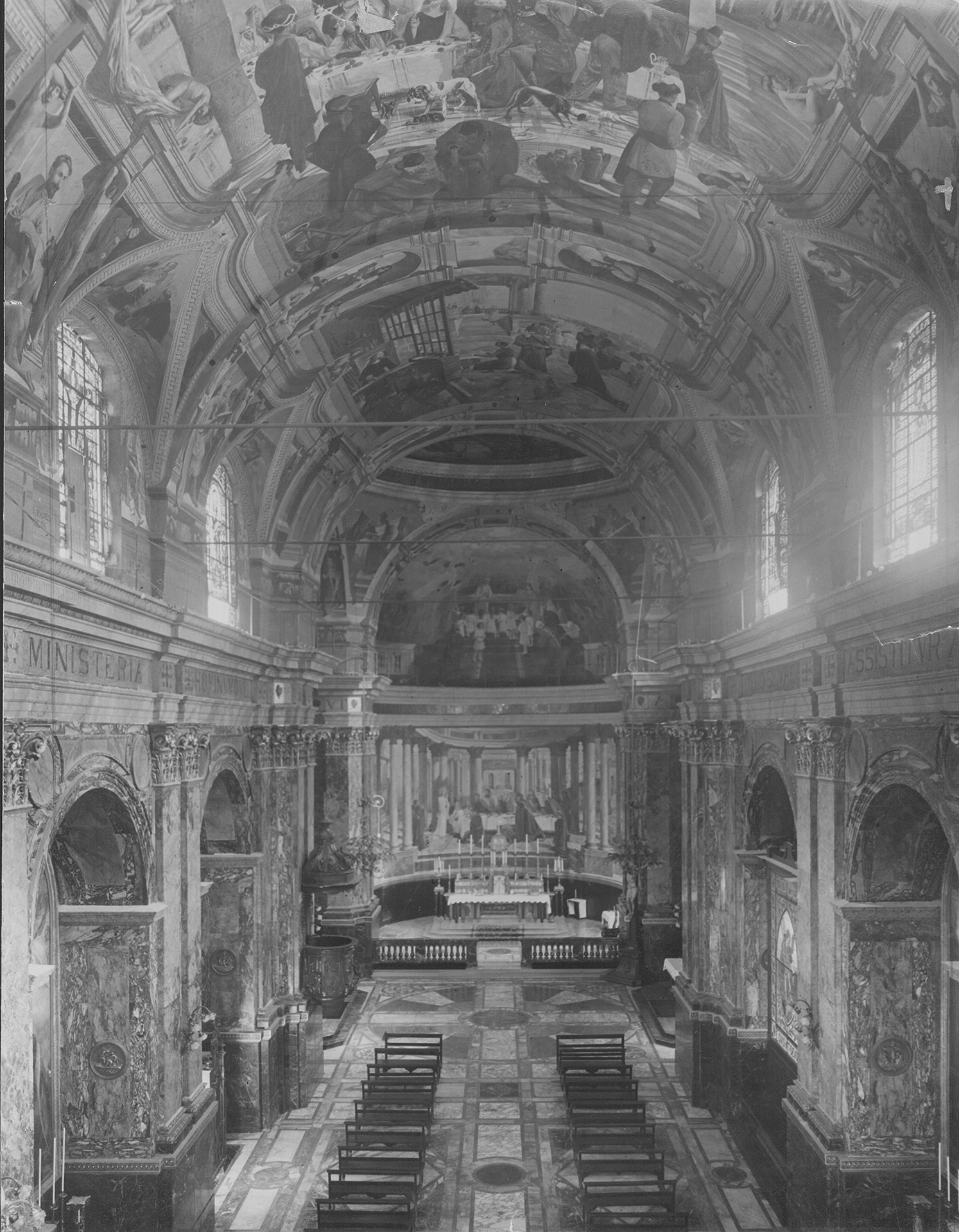
St. Michael’s Church in Buenos Aires Photo: Archivo General De La Nación Argentina
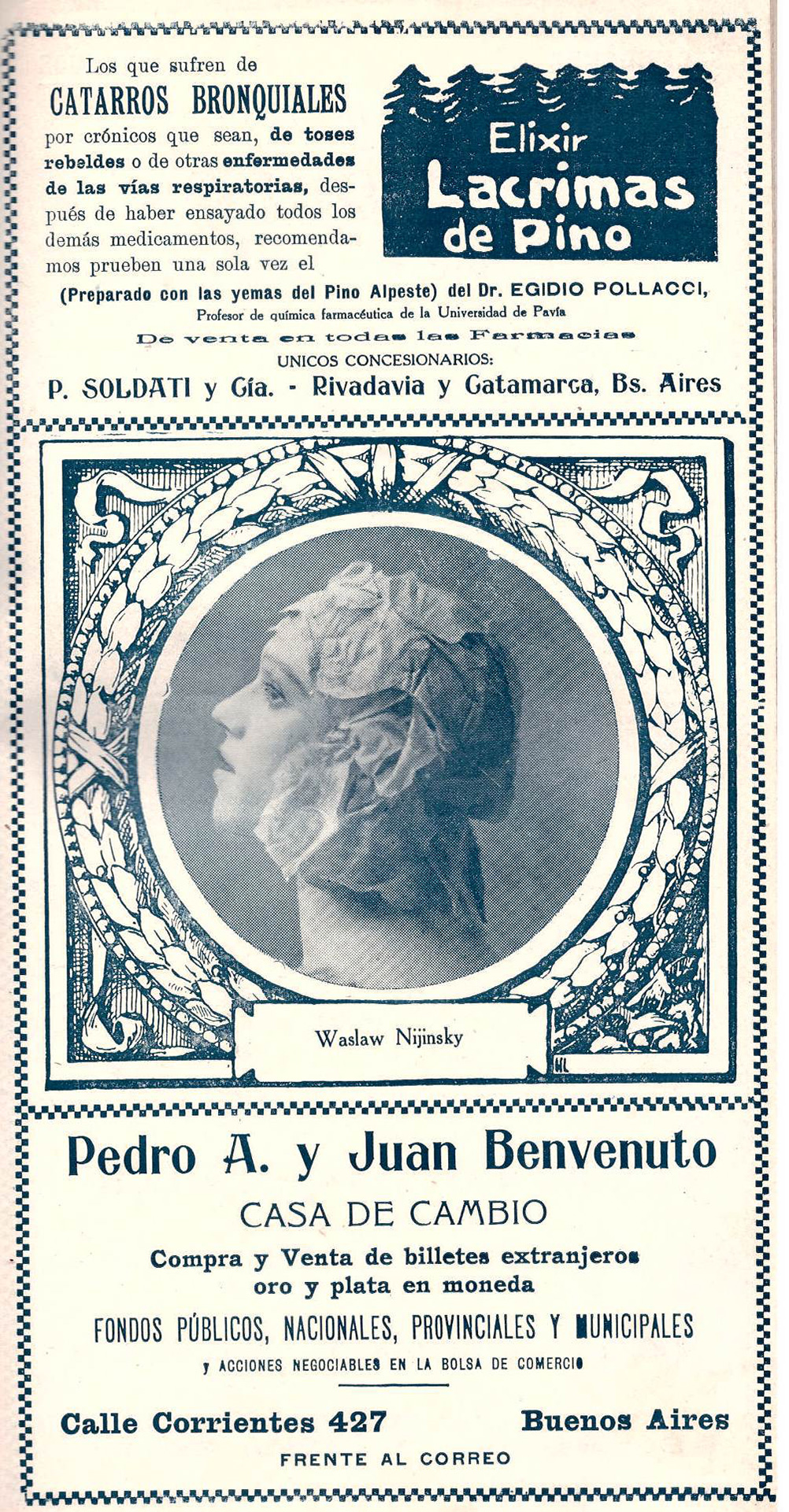
Vatslav Nijinsky’s photograph from the Colon Theater program, 1913 Photo: La Biblioteca del Teatro Colón

Vatslav Nijinsky. Photo: Archivo General De La Nación Argentina
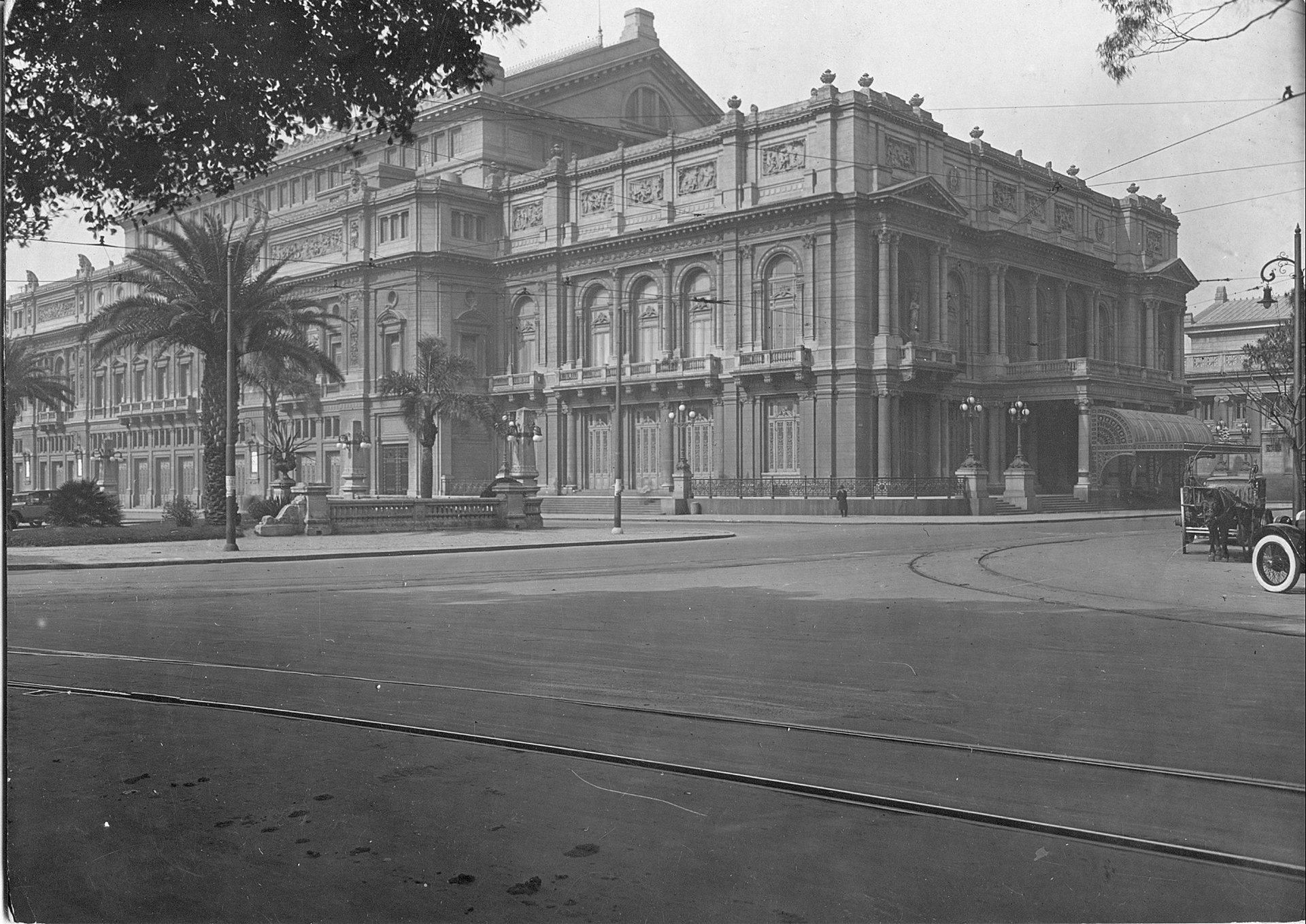
Colon Theater in Buenos Aires. Photo: Archivo General De La Nación Argentina
The Argentinian public was in love with the Russians at first sight. The newspapers had rave reviews. On their free nights, the Nijinskys walked in the parks of Palermo district and visited the zoo to look at exotic animals and birds which Vatslav liked very much. Immediately after the wedding, the dancer sent Diaghilev a long letter where he told him about the changes in his life and promised to remain a friend of the impresario and to serve Ballets Russes. The newlyweds were planning to visit St. Petersburg, but two days before they were going to leave for Russia a telegram in French came in: “Ballets Russes is no longer in need of your services. Don’t come back to us. Sergei Diaghilev.”
When WWI started, the family was in Budapest. The Austro-Hungarian authorities announced the couple, who were citizens of the Russian Empire, to be POWs and didn’t let them out of the country for two years. Only in 1916, the dancer and his family managed to leave for the USA.
Vatslav Nijinsky came back to Buenos Aires in September 1917, during a brief truce with Diaghilev. He danced on the stage of Colon Theater again, planned to stage a ballet about an Indian princess by the libretto of Argentinian poet Ricardo Güiraldes and ended the tour in Uruguay. In Montevideo, at the invitation of the Red Cross, he danced the death of Petrushka.
This was the last public appearance of the great Nijinsky. In 1919, he was diagnosed with schizophrenia, and he spent the following 30 years in mental hospitals. Romola was with Vatslav until his death on April 30, 1950.

The photograph of Vatslav Nijinsky that he presented to the journalist of the Argentinian La Mañana newspaper during the tour of 1917. Photo: Biblioteca del Teatro Colón
New and best




